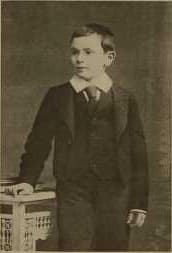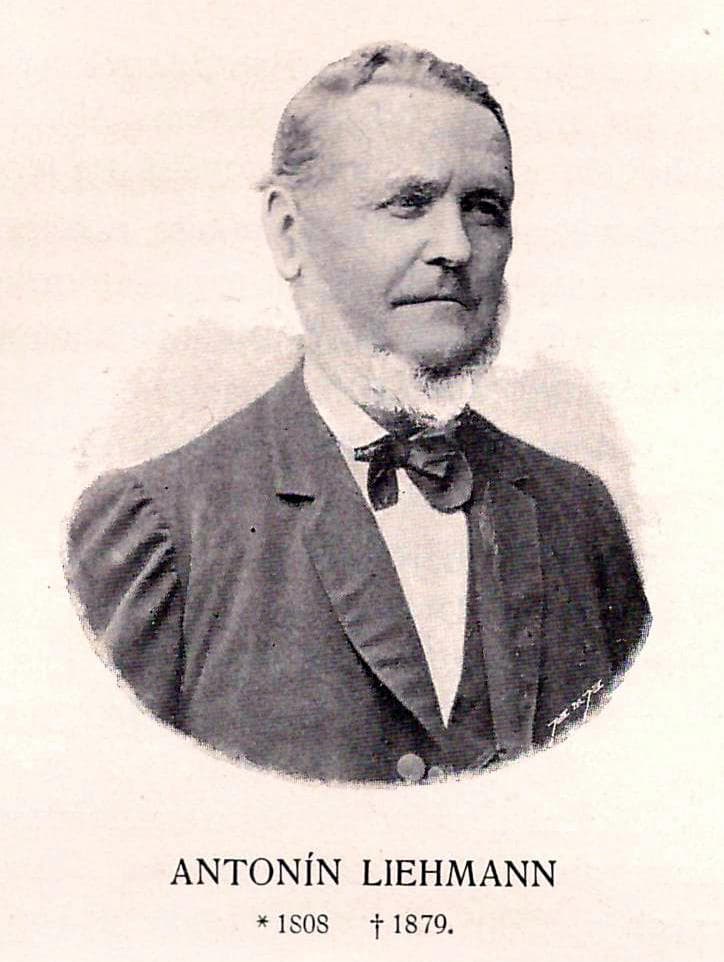An extraordinary premiere took place in Brno, Moravia, on 4 October 1936. Czech conductor Milan Sachs raised his baton to début the 1st Symphony by Antonín Dvořák. A critic wrote, “although the writing was at times awkward, the orchestration is not. It is similar in style to Ludwig van Beethoven and Bedřich Smetana.” The work was not published until 1961, and it was the last of Dvořák’s symphonies to be either performed or published. Of course, at the time of the premiere in 1936, Dvořák had been dead for 32 years already. Here then is the fascinating backstory to this mysteriously “lost” and re-discovered symphony.
Antonín Dvořák: Symphony No. 1 in C minor, “The Bells of Zlonice” (Allegro) (Slovak Radio Symphony Orchestra; Ivan Anguélov, cond.)
Dvořák in Zlonice

Antonín Dvořák as a boy
At the age of 13, Dvořák found himself in the market town of Zlonice in the Central Bohemian Region, a population of roughly 3,000 people, to take his butcher’s examination. He arrived in the early autumn of 1853 and besides butchering, also continued his musical education with the church choirmaster Joseph Toman and the Kantor Antonín Liehmann, who taught him to play the violin, piano, organ, and continuo playing, and music theory.
Dvořák stayed in Zlonice until the autumn of 1856, and by that time he had decided to embark on a musical career. To further his career, he entered a Symphony in C minor, which he had composed in a short time during early 1865, into a dedicated competition in Germany. He did not win the competition, and the score was never returned to him. Since Dvořák had not made a copy, he reasonably thought that the score had been destroyed for good.
Antonín Dvořák: Symphony No. 1 in C minor, “The Bells of Zlonice” (Adagio molto) (Slovak Radio Symphony Orchestra; Ivan Anguélov, cond.)
The Manuscript Journey

Aerial view of Zlonice
Years later, one of Dvořák’s students asked what he had done about the disappearance of his C-minor Symphony, and Dvořák supposedly replied: “I sat down and wrote another.” Unbeknownst to Dvořák, however, the score had not been destroyed. In 1882, a young oriental scholar by the name of Dr. Rudolf Dvořák, no relations, purchased the manuscript from an antique bookstore in Leipzig without telling anyone. At that time, Antonín Dvořák was still not a household name, and Rudolf either didn’t know or did not want to share his discovery with the composer.
When Dr. Rudolf Dvořák died 38 years later in 1920, the manuscript passed to his son. He brought the lost symphony to the attention of the musical world in 1923, and it took a good while before the authenticity of the score was proven beyond doubt. This rediscovery also meant that Dvořák’s symphonic oeuvre had to be renumbered. The Symphony “From the New World,” long known as No. 5 now became No. 9, and the early symphonies were numbered in chronological order. It still took several years before the symphony was officially presented to the public because conductor Milan Sachs carried out “some tactful but essential emendations and abbreviations.”
Antonín Dvořák: Symphony No. 1 in C minor, “The Bells of Zlonice” (Allegretto) (Slovak Radio Symphony Orchestra; Ivan Anguélov, cond.)
The Bells of Zlonice

Antonín Liehmann
Nobody really knows where the poetic subtitle “The Bells of Zlonice” actually originated. The manuscript score carries no such inscription, but Dvořák is reputed to have referred to this work under that title in his later years. A musical anecdote relates that the young Dvořák was kept awake by the local church bells during his apprenticeship in Zlonice. In fact, a number of bell-like passages, particularly in the first and concluding movement, might be heard to musically encode such youthful impressions.

Zlonice
A critic called the work “thoroughly classical in form, inclined to the great models in invention and thematic material.” Without doubt, Dvořák’s melodic imagination is ever-present, as the second movement opens with a chorale in the wind instruments and features a beautiful oboe solo above a string accompaniment. His deep roots in popular music find expression in the concluding movements, set in the meter of the Bohemian polka. In his first orchestral piece, Dvořák introduces himself to the musical world with plenty of self-assurance. In the event, since the composer never had the chance to revise his composition, history left us a highly interesting document of his youthful imagination.
For more of the best in classical music, sign up for our E-Newsletter
Antonín Dvořák: Symphony No. 1 in C minor, “The Bells of Zlonice” (Allegro animato) (Slovak Radio Symphony Orchestra; Ivan Anguélov, cond.)
